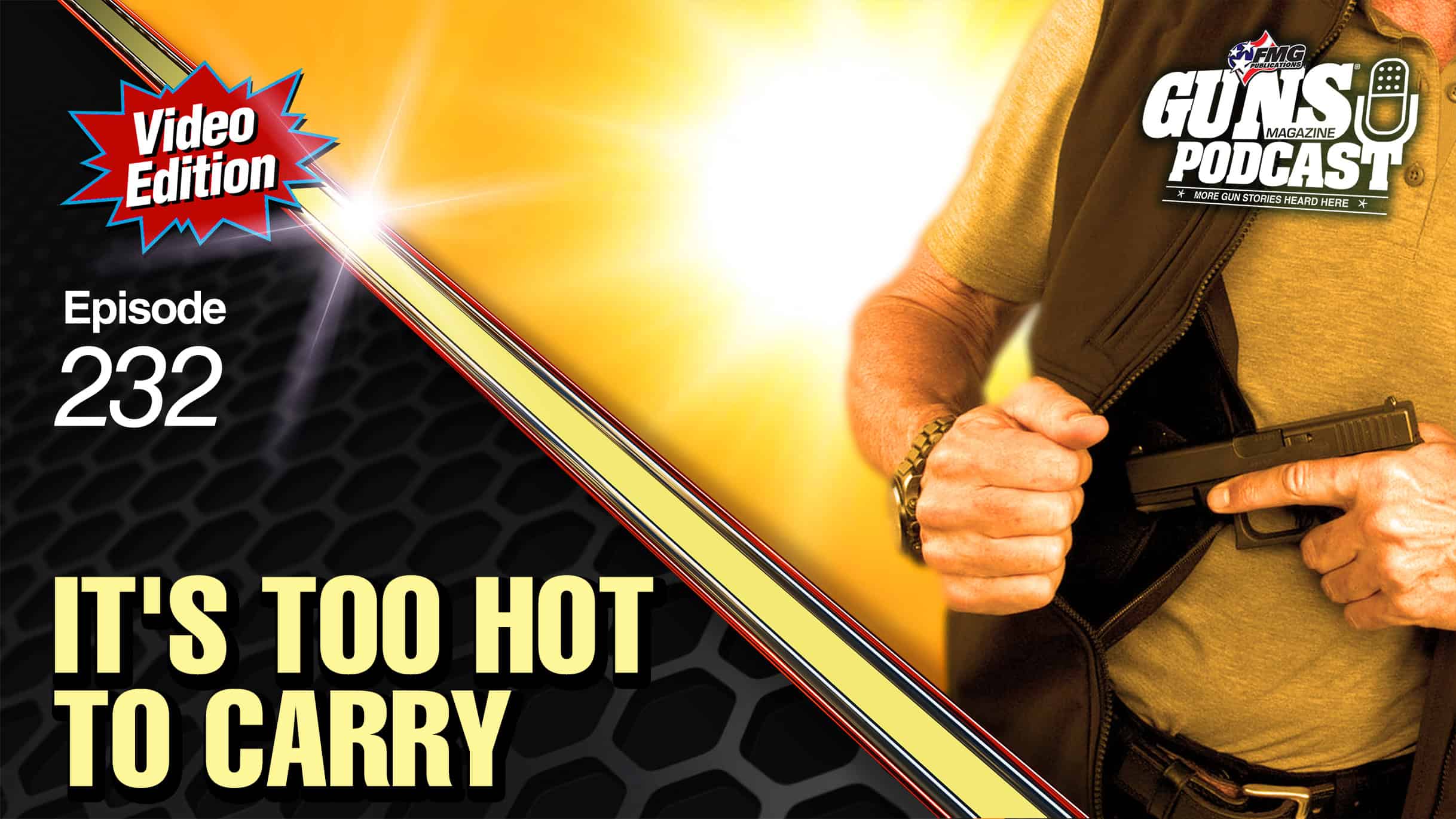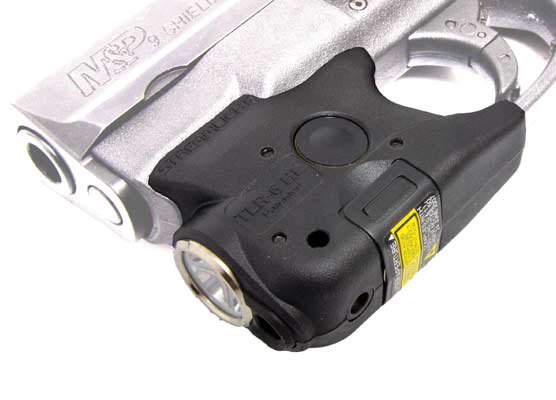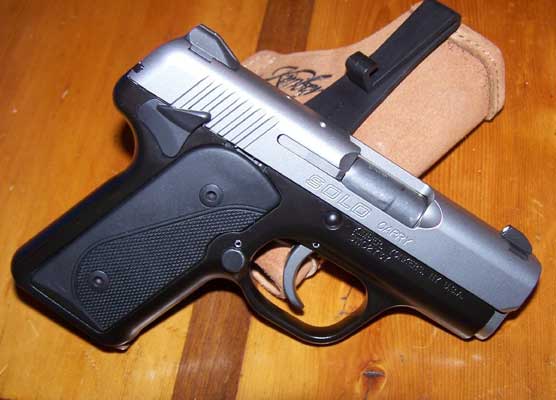Strike!
T/C’s .50 caliber in-line muzzleloader
is as accurate as many centerfire rifles.
From the cultish “7’s” like the Winchester Model 70, the Remington Models 700, 788 and Seven, the Marlin XL7 and the Ruger Model 77 to the wildcards like Mossberg’s “Patriot Night Train” or Franchi’s “Affinity,” “Fenice” and “Intensity,” firearm models’ names have always fascinated me. When Thompson/Center recently announced their new .50-caliber “Strike,” the name caught my attention. I’m glad it did because it turned out to be capable of 3/4-inch groups at 100 yards.
“Strike,” as I was to find out, describes the new gun’s fire control system, which consists of an inline firing pin or “striker,” requiring the shooter to manually cock the mainspring before firing the shot. It’s a design seen on a variety of fine European firearms, consisting of slide on the upper tang, which is pushed forward with the thumb to compress the mainspring.
In the case of the T/C Strike, if the shot is fired, the mainspring is automatically de-cocked and must be reset to fire the next round. If the shot is not taken, the mainspring can be de-cocked as a safety precaution by pushing down on a button on the slide, easing the slide rearward or, in the case of the break-open action of the Strike, by simply thumbing the top lever to the right, opening the action. It’s a safe and highly functional design, which is also associated with a short, fast lock time and in the case of the Strike, a delightful 3.5-pound trigger.
The breeching design of the Strike is very user-friendly, consisting of a size 209 primer adapter, which serves as a breech plug retained by a threaded collar. To clean the Strike, merely unscrew the retaining collar, pop out the primer adapter and voilà: the bore is open and accessible from both ends for cleaning. There’s no excuse for not getting the Strike squeaky clean. Just be sure you coat the primer adapter with an anti-seize compound like Hornady’s One Shot Muzzleloader Multi-Lube & Protectant before reinserting it.
As shipped from the factory, the T/C Strike comes with a factory installed Weaver-style scope base, a set of accessory fiber optic open sights, two 209 primer adapters (one optimized for pellets—the other for loose powder), a multi-tool designed to tighten or loosen the breech collar, serving as a palm protector when using the ramrod and a ramrod extension. The only necessary accessory that’s missing is a .50-caliber short starter. You will need one!
The clearly written and prolifically illustrated owner’s manual is focused on using black powder and Pyrodex pellets as propellants. Good recommendations both, but since the Strike features an enclosed 209 primer pocket, my recommendation for the optimum propellant is Western Powder’s Blackhorn 209. Blackhorn 209 delivers high and consistent velocities, excellent accuracy and above all, less fouling than black powder or Pyrodex, affording the shooter long strings-of-fire without cleaning. Blackhorn 209 does require an action featuring an enclosed 209 primer pocket, and for consistent ignition, standard 209 shotgun primers, rather than special 209 muzzleloading primers.
The 24-inch long barrel of the Strike is optimized for sabot rounds and lead conicals with a 1:28-inch twist. It’s also treated with a nitride coating, inside and out, called “Armornite” by T/C to inhibit corrosion. The owner’s manual includes an extensive list of recommended loads based on the T/C Mag Express Sabot, Maxi Ball and Maxi Hunter conicals. The T/C brand sabots were not readily available, so I focused on 250- to 295-grain sabots in my kit proven accurate in other inline models. These included Hornady’s 250-grain SST, Remington’s 250-grain Premier AccuTip, Precision Rifle’s 260-grain Dead Center, Harvester Muzzleloader’s 260-grain Scorpion PT, Federal’s 270-grain Trophy Copper B.O.R. Lock and PowerBelt’s 295-grain Aerotip.
One thing you immediately learn about sabots is they vary in diameter and may or may not be an easy fit in your barrel. This was true of the Strike. Neither Hornady’s SST or Remington’s AccuTip could be loaded down the bore without using a hammer and were passed over in the testing. The easiest loading sabot was Harvester Muzzleloader’s 260-grain Scorpion PT, which features Harvester’s unique “Crush Rib” sabot jacket. It’s a 4-petal sabot formed with multiple vertical ribs, and it also proved to be the most accurate sabot of the group.
To establish some velocity parameters with Blackhorn 209 in the Strike, I selected Precision Rifle’s 260-grain Dead Center sabots, only because I had a lot on hand. Loading Blackhorn 209 on a volume-to-volume equivalency to black powder, the chronographed results were as follows: 80 grains gave 1,644 fps; 90 grains 1,736 fps; 100 grains 1,875 fps; 110 grains 2,020 fps.
Blackhorn doesn’t recommend loads over 120 grains, by volume, with sabots up to 300 grains, and I found 100 grains was, personally, a pleasant threshold in terms of recoil and velocity.
The results were impressive when I mounted the Strike with Bushnell’s excellent 3-9×40 Bone Collector scope with its Dead On Accurate trajectory-compensating muzzleloader reticle, shooting 3-shot groups at 100 yards, only swabbing out the barrel when changing sabot brands.
It being the Arizona javelina season, the Strike topped with the Bone Collector scope was loaded with the 260-grain Scorpion PT sabot over 100 grains of Blackhorn 209, and I went javelina hunting. It proved to be a deadly combination!
I was impressed with Thompson Center’s Strike. It’s a thoroughly modern in-line design with a good trigger and short lock time. The fact is some of my modern cartridge rifles won’t deliver 3/4-inch groups at 100 yards. Available with walnut or synthetic stocks with a price starting at $499, it’s an easy way to include an extra harvest next hunting season.









